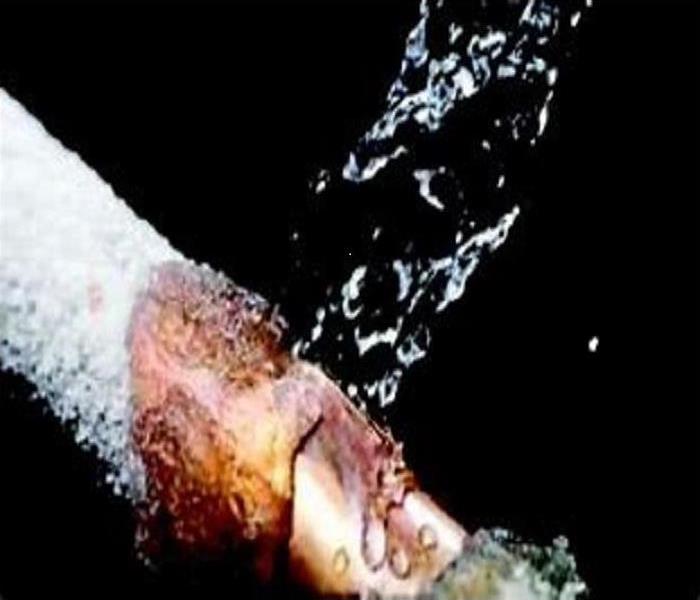Turn Down the Temp, But Don't Let Your Pipes Freeze!
1/18/2019 (Permalink)
You often hear about how you should turn down the thermostat to save energy, and there are a slew of helpful ideas on the subject. You can turn the thermostat down when you're out, when you're sleeping, and you can save about 1% on your energy bill per degree you turn your thermostat down! This is all very exciting.
But before you go crazy with turning down the thermostat really low, I'd like to point out some things you might want to keep in mind.
Frozen pipes are a big deal. If the water in your pipes starts freezing, you run the risk of that pipe exploding—and goodness knows that's not what most people are hoping to do when they're trying to save energy in the dead of winter. Unfortunately, I can't just say "keep your thermostat over X degrees to avoid pipe freezing." It depends on where you live, where your pipes are, and how well insulated those pipes are.
There are relatively few places in the United States where you'd never have to worry about frozen pipes. According to Weather.com, southern states generally start having issues with frozen pipes when the temperature reaches about 20 degrees Fahrenheit (the distinction is made because houses in the south are less likely to build pipes inside or in the "warm" parts of your home.)
So, unless you live in a place where it never gets below freezing (you lucky souls, you), you'll need to know some things about your house or apartment: Some water pipes will be in the "warm" parts of your house.
This is why you don't want the temperature inside your house to drop too low, because bathroom and kitchen pipes are generally not insulated, and they rely on whatever system you're using to heat the rest of your house to keep warm.
And if you rent, you might want to see if the owners require their tenants to keep their thermostat above a certain level—my apartment requires all tenants to keep their thermostats above 65, for example, and asks us to consider leaving the taps dripping.
But while these are all good reasons to be careful with the temperature you keep your thermostat at, don't forget the rest of your pipes—some of your water pipes may be in "cold" parts of your house, like crawl spaces or attics, where they don't get any of your home's ambient heat and may, in fact, be subjected to air directly from the outside.
What you'll need to do is based on the region you live in, so you may want to look up your state or city's Web site and see if they have recommendations on how to prepare your house for the winter, because you may want to insulate those pipes.
In the end, I suppose it's still a judgment call, but just remember: Your pipes are vulnerable, frozen pipes are a pain, and you should always consider how your house is built before you make any drastic decisions on how to heat your home in the winter.
https://www.energy.gov/energysaver/articles/turn-down-temp-dont-let-your-pipes-freeze






 24/7 Emergency Service
24/7 Emergency Service
